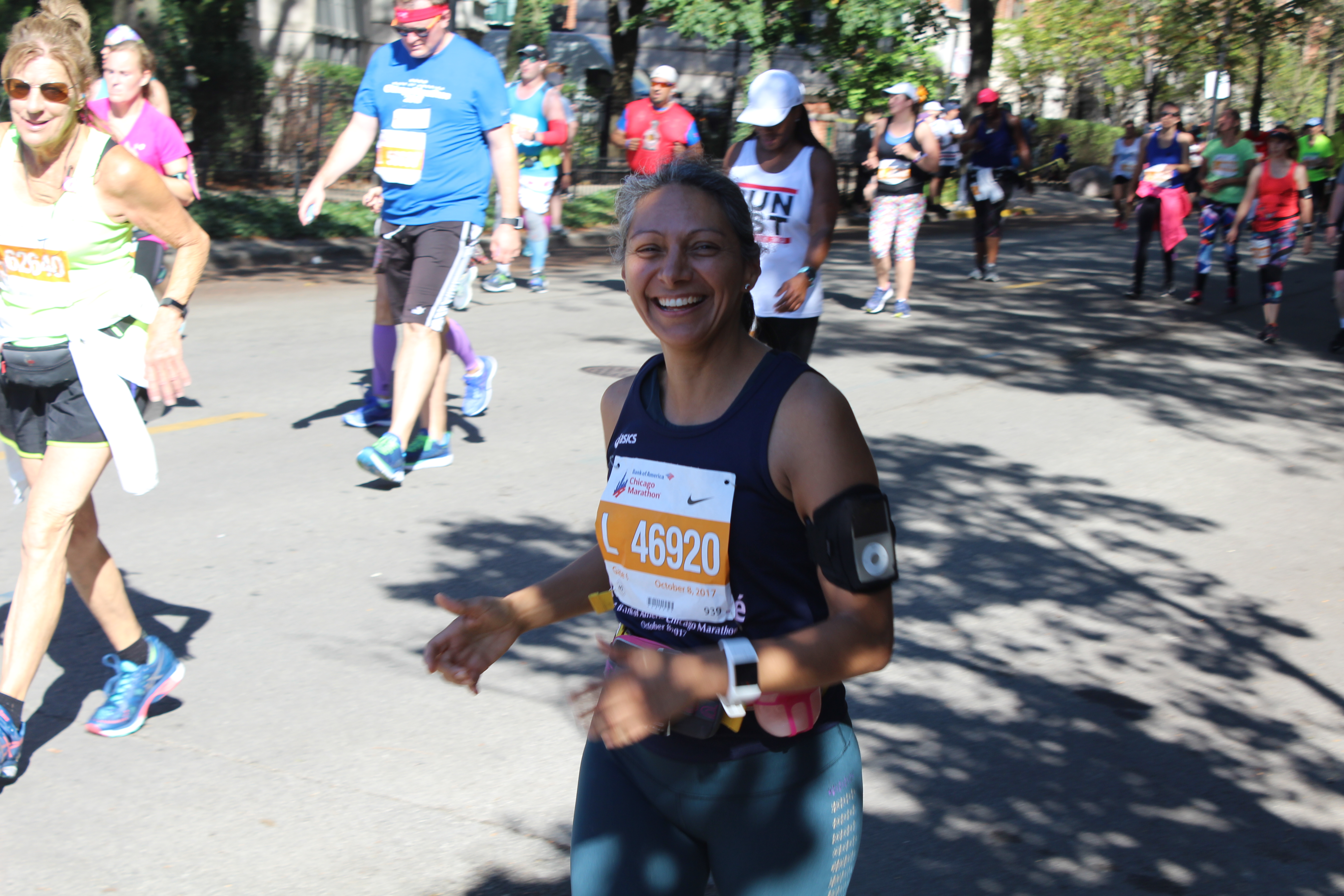
Joseline Cano
Co-Editor-In-Chief
Associate Professor of the School of Social Work Leticia Villareal Sosa On Ocatober 8th ran the Chicago Marathon
How did you Prepare for the marathon?
“I trained for the marathon beginning in June. I followed the an advanced marathon training plan from a book called ‘Complete Book of Women’s Running’. Because I was running for a charity, Taller de Jose, I had a training group. I didn’t run with them very often because I preferred to do my long runs by myself. My
schedule often didn’t coincide with the training group, but I did get some additional tips from that coach. That was just the preparation for the running part, but I also did other preparation. For example, I had to really focus on my diet. I follow a grain free diet, so I had to do some additional research on how to fuel using fats rather than carbs. I did not do the whole stereotypical “carb-loading” that you hear other runners doing. Then there is the psychological preparation, it is really daunting to think about running an entire marathon. I had done half marathons before but never a full marathon. I did feel afraid of going this distance. I did a lot of neighborhood running throughout Chicago, including; Pilsen, the lake shore path, the gold coast, south loop, greektown, etc. It helped that I was familiar with all the neighborhoods and paths that the marathon goes through.
What were your motivations?
“I had two reasons I chose to run the marathon: First, I had always said that if I ran a marathon, I would run it for a cause that I really believe in. I had done a lot of work with Taller de Jose, an organization that provides accompaniment to people mostly in the Little Village neighborhood. Many of the people they serve are undocumented, and I had always thought I might run for this organization. They do a phenomenal job and the level of respect that they have for the people they serve is just beautiful, it’s not like any other social service organization. Second, I thought this was the time to do it given all of the anti-immigrant rhetoric and our current president. This was something that I could do to support immigrant and undocumented communities.”
What what the most difficult part for you?
“During the race, I would say the most difficult part was around mile 16. It was mostly psychological, because I kept thinking that after 16 miles, I had 10 more miles to go and I kept calculated how many 5K’s that would be, or how long it might take me. Once I got to mile 19, I was totally fine and energized again for the last 7 miles.”
canojose@my.dom.edu
